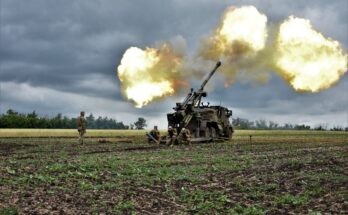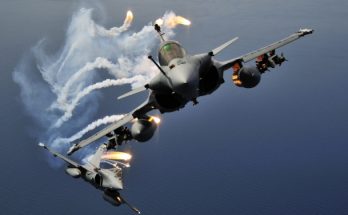Russian arms exports since the start of 2019 have totaled nearly $6 billion, according to Rosoboronexport chief executive Alexander Mikheyev.
Speaking at the St. Petersburg International Economic Forum on June 6, 2019, Mikheyev said, “We have delivered products worth $5.7 billion to foreign customers since the beginning of the year.” He did not further breakdown the specifics, but some contracts include the Su-35 delivery to China, which was completed in April. Russia also sent S-400 surface-to-air missiles to China earlier in the year. Ethiopia, meanwhile, revealed earlier this year that it had procured the Pantsyr-S1, though it isn’t known whether that delivery occurred in 2019.
Mikheyev continued, “As a world arms export leader, we are not only watching and following global trends today but are also developing unique areas of work for the market, including financial mechanisms for foreign trade activity.”
Alluding to international sanctions on Russia, he said, “For five years, Russia and Rosoboronexport have been confronted with serious restrictions from some international financial institutions that have become strongly dependent on the political will of some world arms market players. We can only perceive them as unfair competition and the attempts of pressure on us and our partners.”
Since 2014, when Russia annexed Crimea from Ukraine, Moscow has faced a range of sanctions from the U.S. and EU, targeting a number of sectors. Washington – the largest arms exporter in the world – has particularly aimed to target the Russian defense industry with sanctions, such as through the Countering America’s Adversaries Through Sanctions Act of 2017. These restrictions put sanctions both on Russian defense manufacturers and foreign states that import Russian military hardware, though the U.S. has offered some allies and partners waivers.
Turkey, a member of NATO, has sought to procure the S-400 from Russia, but the U.S. has warned Ankara that such a deal could jeopardize its participation in the F-35 program and indicated that Washington could sanction Turkey over the purchase.
In order to support partners that have Soviet- or Russian-origin equipment in their force structures, the U.S. is rolling out a program to offer financial assistance for partners to procure U.S. equipment. Defense News reported on the program, called the European Recapitalization Incentive Program, last month, noting that, to start, it targets countries like Albania, Bosnia, Croatia, Greece, North Macedonia, and Slovakia. The U.S. could expand the effort to more countries in the future.
The aim of this squeeze play is to diminish Russia’s ability to sign arms exports deals with foreign customers. Defense exports serve as a key source of non-energy income for the Russian state and also help reduce the unit cost of systems that the Russian military is already procuring for itself, by supporting production lines and covering research and development costs.
Military markets analyst, covering Eurasia, Middle East, and Africa.




